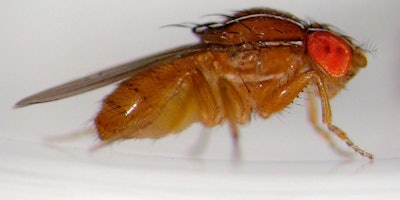

 Patricia Hottel, Technical Director, McCloud Services
Patricia Hottel, Technical Director, McCloud Services Reducing waste and incorporating other sustainable practices in facilities are initiatives that continue to grow in popularity and regularity in the food industry. However, some practices can increase a facility’s risk to pest activity. It is critical for pest management professionals, as well as their clients, to be aware of these potential threats. This includes consideration of the positive and negative impacts to a facility when a process changes, which can affect pest activity.
Value Added Surplus Products (VASP)
The practice of taking food that is not within a product specification, and using it for animal feed has been in existence for years. This can help reduce waste going to landfills by repurposing it for animal food. In recent years, this concept has been extended to repurposing “wastes” for human food as well. For example, blemished fruit, which might not be suitable for supermarket shelves, can be blended into juice. The fruit’s appearance may not be attractive, but the nutritional value is still present.
This sustainable practice can have potential effects on pest management with how the food is stored and shipped prior to use. For example, it is common practice for dry pet food wastes, pasta or other grain-based foods to be stored on a trailer destined for animal feed recycling. The duration that the trailer remains on site will impact the potential for pests to develop in the feed trailer as they capitalize on the available food. In addition to providing food, the trailer odors can serve as an attractant to pests, increasing the potential for pest activity in the structure.
The VASP trailer will eventually travel to a delivery site. Processors must consider the conditions of the delivery site and potential for pests to hitchhike back to the facility. Procedures must be in place for cleaning and inspecting the trailer. If totes are used for delivering ingredients, the processor must ensure that the totes are not returned with pests. As a pest management company, McCloud Services has traced both rat and mouse introductions into facilities on returning VASP totes and trucks.
Recycling Food Containers
Similar to the VASP issue of proper storage and transport of food for reuse, the process of recycling food contain-ers can face similar challenges. One of the most common examples is recycling programs for beverage cans and bottles. Typically, recycled cans and bottles are not completely rinsed out, and sugary juices or syrups may reside inside the bottoms of these containers. If they sit for extended periods of time, pests like small fruit flies can develop inside the containers. This may occur on a small scale, such as in employee break rooms, or on a larger scale where a company manufactures beverages and recycles or reuses containers as part of their processing.
Sometimes, totes are used to recycle liquids. The manner in which the totes are handled can influence pest activity, including bee and wasp activity when totes are stored outside. If a company is recycling and refilling containers, it is vital to consider the conditions in which the returned, refillable containers were previously stored, and determine what the potential is for cockroaches or flies to be returned with these containers. Appropriate measures must be taken to manage those risks.
 Recycled cans and bottles that are not completely rinsed out may have sugary juices or syrups inside, which could develop an issue with small fruit flies.
Recycled cans and bottles that are not completely rinsed out may have sugary juices or syrups inside, which could develop an issue with small fruit flies.Searches for New Sources of Protein
To meet the global demand for new, more economical sources of protein, food manufacturers are turning to insect farming and cultured grown meat. Although experts do not anticipate more pest problems in these facilities, compared to conventional meat processing plants, they may present some new challenges. Insect farms, like those producing crickets destined for cricket flour, will require special procedures and consideration to keep these facilities free of pests. For example, crickets will be sensitive to many of the pesticides used to control cockroaches or other pests that might plague the facility.
One may anticipate fewer pest problems for processing facilities where meat is cultured using animal cells as the lack of hogs, cattle and poultry deliveries should mean less problems with pests like filth flies. Traditional animal rearing accounts for a great deal of manure being generated, whereas cultured meat creates less manure and therefore, less flies which may breed in the manure.
Increasing the Energy Efficiency of Structures
Energy conservation methods can create a positive environmental impact when it comes to reducing pests. LED lights in a spectrum that is less attractive to insects, along with improvements to seals around windows and doors, can result in energy savings and reduced pests. LED lights, when used in the appropriate range, can be less attractive to pests and reduce the number of flying insects coming to the structure. It is important to note that not all LED lights are created equal. Insect light traps utilizing LED lights are in development and LED lights can attract in- sects. Depending upon the color of the light emitted, such as light in the yellow to red range (575-700 nm), LED lights can be less attractive to pests. Food facilities that switch from highly attractive mercury vapor lighting to different lighting ranges can also benefit from reducing the risk of light-attracted pests coming inside.
Placing lights on motion detection sensors and timers is another way to reduce insect attraction and energy. By reducing the time that the lights are on, attraction time is reduced.
Taking steps to reduce heat loss through door and window seals can also help reduce the attraction of the structure to pests and help eliminate pest entry points. Proper sealing can reduce pest access, and reduce pest attractants emanating from openings like heat and food odors. Dock doors and personnel doors are also important areas to target in pest proofing, especially considering the impact on energy efficiency and pests.
Growing Crops Close to Home
Rooftop herb gardens, vegetable gardens for food banks or hydroponic farms for vegetables that are located outside of a food facility all have potential pest problems. The concept of being able to provide fresher produce, with reduced transportation efforts, is an admired practice by many. However, the possible pests associated with farming can impact the food facility, including rodents and fungus gnats. Facilities must have proper plans to mitigate the impact of these pests. In addition, there may be some opportunities for a pest management firm, more accustomed to urban pests, to expand their service offerings for horticultural services and consultation to help combat pest issues.
Conclusion
Sustainability efforts can help reduce the amount of wastes generated by the food industry to benefit the environment. However, they can have both positive and negative effects on pest pressures. Proactive preventative steps will be needed to minimize those sustainability efforts that can encourage pest development.
About the Author
Patricia Hottel is technical director at McCloud Services and has over 35 years of pest management industry experience. Hottel is a board-certified entomologist and a member of the National Pest Management Association’s Commercial and Fumigation Commit- tees. She is also a former member of the board of directors of the National Pest Management Association (NPMA) and the Illinois Pest Control Association (IPCA). She has served on the board of directors for the professional pest management fraternity, Pi Chi Omega, is a past chair and current member of the Copesan Technical Committee, is a past chair of NPMA’s exam review board, and the NPMA Technical Committee. Hottel holds a bachelor’s degree in entomology from the University of Georgia and a master’s degree in instructional technology from the University of Central Missouri.
About McCloud Services
Founded in 1904, McCloud Services is a leader in integrated pest management solutions. Dedicated to providing the highest level of pest management services and customer care, the company’s programs are designed to target immediate pest concerns with the least possible threat to people, property and the environment. McCloud Services embraces the latest technology innovations and remains at the forefront of the pest management industry. The company’s mission is to protect its customer’s health, property, food, and the environment while providing the highest level of safety for its employees and the general public. McCloud Services is a regional service provider with locations in Illinois, Indiana, Iowa, Kansas, Kentucky, Missouri, Ohio, Tennessee and Wisconsin.























